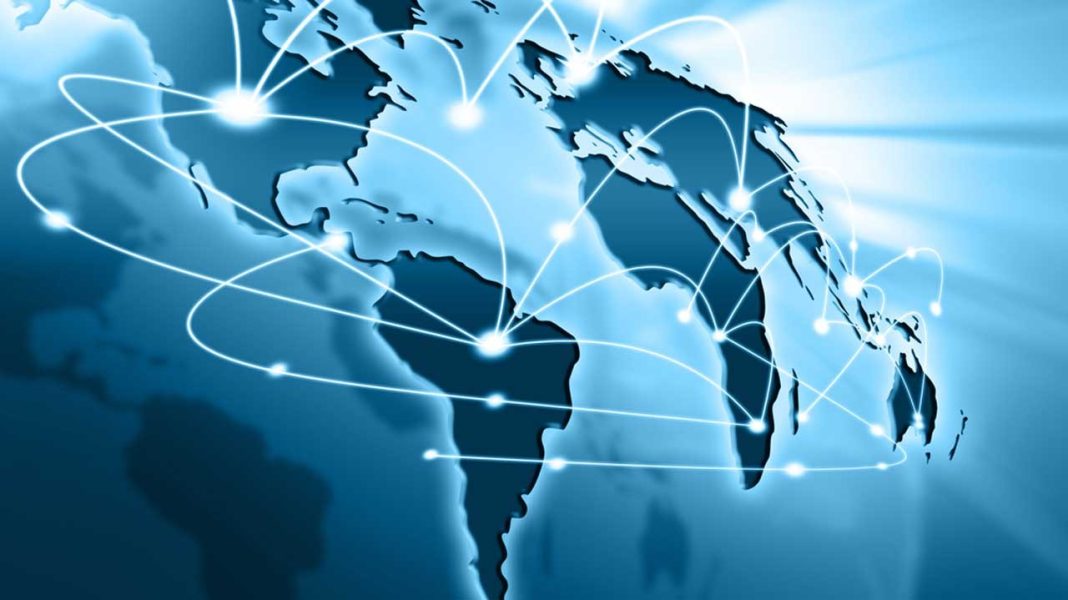By Asad Cheema
ISLAMABAD: The commercial usage of 5G technology (the 5th Generation Mobile Network) would herald a new era of seamless connectivity, empowering individuals and propelling industries towards a future of untapped potential.
With its transformative capabilities, the 5G is set to revolutionize the way people connect, while simultaneously ushering in a wave of extraordinary business opportunities, particularly in the realms of the Internet of Things (IoT), sensing and advanced manufacturing. As the fifth-generation cellular network takes centre stage, its ability to connect people better than ever before opens up a world of possibilities.
With lightning-fast speeds and reduced latency, individuals will experience seamless streaming, instant downloads, and real-time interactions, transforming the way they communicate, work, and entertain themselves.
Industries are set to benefit immensely from the targeted support that 5G brings to industrial needs. The Internet of Things (IoT), which connects an ever-expanding network of devices, will flourish under 5G’s enhanced capacity, reliability, and low latency. This will enable industries to harness data-driven insights, optimize operations, and create intelligent, interconnected systems that drive efficiency and innovation. Sensing technologies, utilized in fields such as environmental monitoring, healthcare, and smart cities, will also witness a significant boost from 5G.
With its high-speed connectivity and ability to handle vast amounts of data, 5G facilitates real-time data collection, analysis, and decision-making, enabling timely and informed actions to address critical challenges and improve the quality of life.
Sabrina Meng, Huawei’s Rotating Chairwoman and Chief Financial Officer at Mobile World Congress (MWC) Shanghai in her keynote address titled “Embracing 5G transformation” said 5G has been in use across all industries and countless households around the world and is changing the way people work and live, creating tremendous economic, industrial, and social value.
She said, “5G has been in commercial use around the world for four years now. It’s driving new value creation, and 5.5G is the next step forward”.
“Science and technology are moving towards large, complex systems. This requires matching technology to specific scenarios and performing systems engineering, to pave the way for 5G’s ongoing success.”
5G is creating value along three different fronts, she said adding science fiction can only sketch the future but science and technology can turn imagination into reality.
“For consumers, 5G, cloud, and AI have set off a chain reaction, creating an environment where all buyers can also be sellers. For industries, 5G has become a new driver of productivity. There’s greater alignment than ever between technology suppliers, their partners, and customers and 5G can provide the most value. Strategic patience, an in-depth understanding of industrial scenarios, and ongoing improvements to ROI have given 5G a foothold in industrial applications.
Moving ahead, 5G will give rise to new devices and applications that deliver a more immersive experience, like 5G New Calling and naked-eye 3D. 5G is also ushering in a new era of super-connectivity between things, bringing new strength to IoT networks and driving new forms of productivity.”
She said, “5.5G is the next step forward for 5G. 5.5G will feature 10 gigabit downlink speeds, gigabit uplink speeds, the ability to support 100 billion connections, and native AI. It will connect people better and create incredible new business opportunities with more targeted support for industrial needs in domains like IoT, sensing, and advanced manufacturing.”
“The ladder to success isn’t built on ongoing progress with a single technology,” Meng noted adding, “It’s built on matching technology to specific scenarios and real-world needs. And systems engineering is key to taking the next step up. The commercial deployment of 5G has created a growing appetite for more groundbreaking, leapfrog innovation. So what will take 5G to the next level, and how will it provide greater value in different vertical markets?”.
“This will require finding the right technology for different scenarios and performing more comprehensive systems engineering. This will also require diving deeper into industrial scenarios, truly understanding customers’ pain points, and adopting a more holistic systems engineering mindset. The industry needs to work more closely together both up and down the value chain – with peers and partners, customers and developers – on solution modelling and optimization, as well as tools and methodologies. The industry also needs to pave the way for ongoing success throughout the entire product lifecycle, from R&D and procurement, to supply and marketing,” she opined.
At the conference, Huawei’s Director and President of ICT Products and Solutions Yang Chaobin announced the launch of the complete set of commercial 5.5G network equipment in 2024. Yang Chaobin said the company intends this launch to mark the beginning of the 5.5G era for the information communication technology industry.
5G deployment progressed rapidly over the past four years and is already yielding significant financial gains. Today, there are more than 260 commercial 5G networks worldwide, serving over 1.2 billion users, and there are already 115 million gigabit F5G users. With service models and content continuously evolving, breakthroughs in technologies like glasses-free 3D are creating unprecedented immersive experiences for users. However, these new services continue to require stronger 5G network capabilities. The industry has widely agreed that 5.5G will be a key milestone in 5G evolution and that it is fast approaching.
Huawei proposed the concept of a “5.5G Era”, based on an end-to-end solution that integrates comprehensive evolved technologies including 5.5G, F5.5G, and Net5.5G. This solution would protect operators’ previous investment in 5G, while also improving network performance by 10 times. This 5.5G Era would feature 10 gigabit peak downlink speeds and gigabit peak uplink speeds to meet increasingly diverse service requirements. It would also refresh the industry vision by using new technologies like passive IoT to unlock a market of 100 billion IoT connections.
Yang explained, “With a clearly defined standardization schedule, the 5.5G Era is already poised for technological and commercial verification. In 2024, Huawei will launch a complete set of commercial 5.5G network equipment to be prepared for the commercial deployment of 5.5 G. We look forward to working with all industry players to embark on the new journey towards the 5.5G era.”
As an advocate for end-to-end 5.5G solutions, Huawei has been working with multiple players across the industry on R&D and verification of key 5.5G technologies. Significant progress has been made in this verification process, specifically for extremely large antenna array (ELAA) which underpins 10-gigabit downlink, flexible spectrum access which helps realize gigabit uplink, and passive IoT which can enable 100 billion IoT connections. 50G PON is another key technology that can enable 10-gigabit speeds for F5.5G ultra-broadband networks and is expected to be extensively used in homes, campuses, and productions in the future.
Huawei has worked with over 30 operators around the world on technological verification and application pilots for these technologies. In addition to the development of key technologies for 5.5G wireless and optical access networks, Yang announced that the company has been working on applying AI-native technologies to 5.5G core networks to continuously enhance network capabilities and availability.
This would allow AI capabilities to be delivered to the very ends of networks so that they can better serve numerous industries. Net5.5G promises 10-gigabit access, ultra-broadband transport, and microsecond-level latency over AI networks, allowing it to serve as a next-generation network foundation for industrial digitalization by providing high-quality network access.
The industry is still in its earliest stages of developing a vision for 6G, and only just beginning related research into key technologies. This is why many have turned to 5.5G as their milestone for future development. The 10-fold improvement in network capabilities in the 5.5G Era is set to enable numerous industries to unleash the productivity of digital technology.






